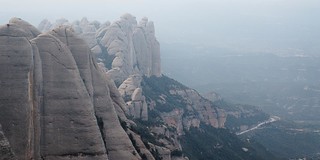The little-known objects left behind in man's first trip to the Moon
The arrival of man on the Moon on July 20, 1969 is one of the greatest events in the entire history of mankind.
Neil Armstrong, Michael Collins, and Buzz Aldrin were the three astronauts on NASA's Apollo 11 mission who accomplished that feat. Collins remained in orbit in the command module, while Armstrong and Aldrin descended to the surface of the Moon in the Eagle lunar module. Armstrong was the first to descend, leaving what is undoubtedly the most famous footprint in history. But more than footprints were left on the Moon. The best known are the landing phase of the Eagle and the United States Flag, but there were more.
Now that there is talk of making new trips to our natural satellite, it is worth reviewing the things that were left there on that first trip. The channel Neo published a few months ago an interesting video reviewing and recreating computer those objects:
Here you can see some screenshots of the video. It is made with great graphics quality. The video is not only interesting for showing the abandoned objects, but also how they will be today, after decades subjected to ultraviolet radiation, since the Moon does not have an atmosphere like the one that protects the Earth.

Of the objects that appear in the video, there are two that I particularly liked. The first of these is a patch from the Apollo 1 mission, whose crew members were Virgil I. "Gus" Grissom, Edward H. White and Roger B. Chaffee. All three died when the rocket caught fire with them inside during a launch simulation on January 27, 1967.

In second place are these two commemorative medals for Soviet astronauts Yuri Gagarin and Vladimir Komarov, the first who died on March 27, 1968 when his MiG-15 fighter crashed, and the second who died on March 4, 1968. April 1967 when his Soyuz 1 capsule crashed on its return to Earth. It was a nice touch from NASA to their Soviet rivals.

|
Don't miss the news and content that interest you. Receive the free daily newsletter in your email: Click here to subscribe |
- Lo más leído
- The infiltration of a group of Spanish explorers into the Russian aircraft carrier Minsk
- A former secret submarine base in Estonia and its important role in the Cold War
- An old Soviet military plane abandoned from 1971 on a Russian island near Alaska
- Minsk: an abandoned Soviet aircraft carrier with a plane, torpedoes and missiles inside
- The 'Bomber Glacier': The wreckage of a B-29 on a remote mountain of Alaska
- The supermassive black hole of Phoenix A, the biggest known light-devouring monster
- Sabbione: a beautiful Swiss town that looks like something out of 'The Lord of the Rings'

 ES
ES





Opina sobre esta entrada: